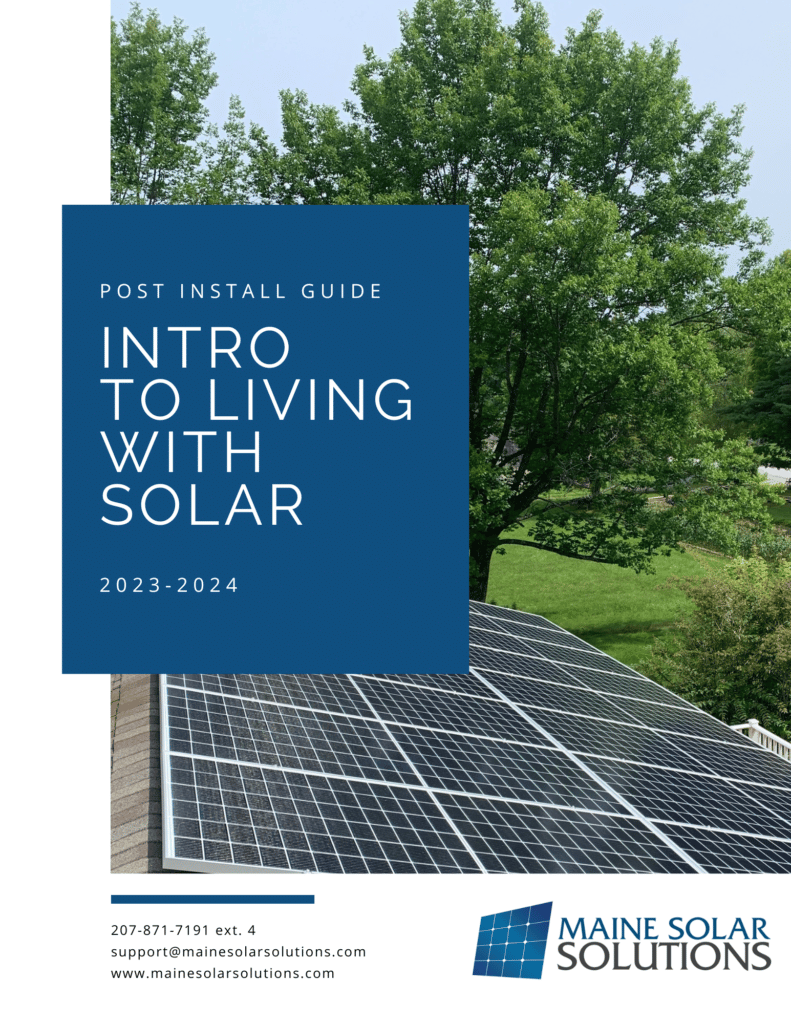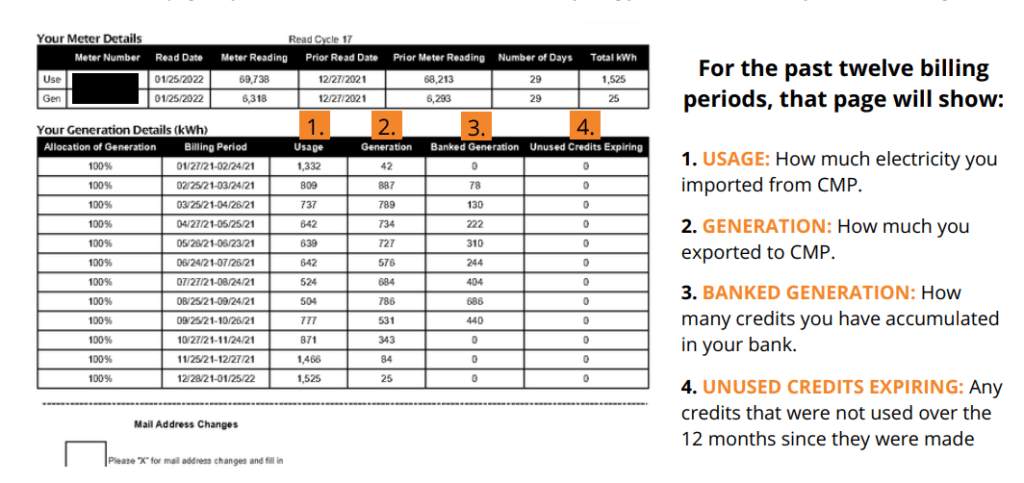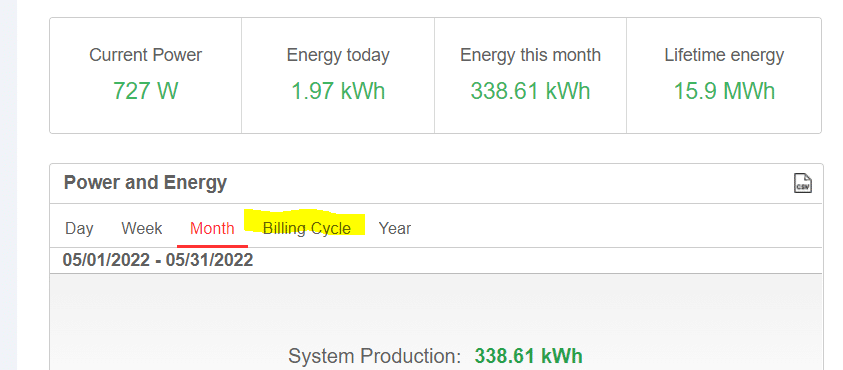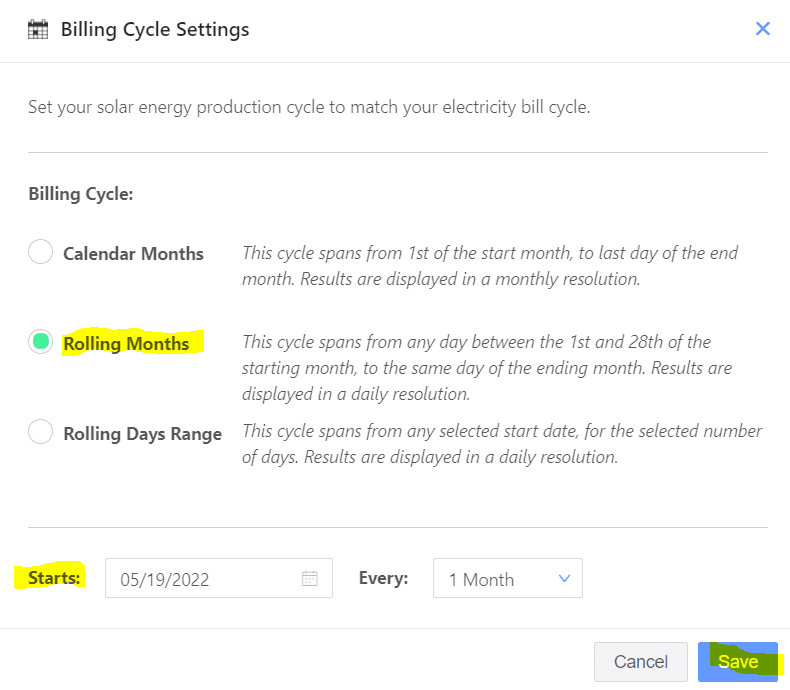WE ARE HERE TO SUPPORT YOU
Thank you for choosing to go solar with Maine Solar Solutions. We look forward to maintaining an ongoing relationship with you. Though you can always reach us directly with questions during our hours of operations, this customer success page is designed to house everything you may need access to over the lifetime of your solar electric system and provide quick answers to many of our customer’s most frequently asked questions.
Support & Service:
TECH SUPPORT CONTACT
- Customer Service Line: 207-871-7191 #4
- Email: [email protected]
- Service Request Form: Fill in the form and hit submit, and someone from our team will be in touch.
If emailing or filling out the form, please send a detailed description of the issue and photos of any error codes, lights, or other visual information about the problem. Our in-house support team will initially attempt remote diagnostics to correct the issue and, if necessary, contact you to schedule a service call if needed. Please do not open an electrical enclosures within the system. They are no servicable components inside. Doing so may void the manufacturers warranty.
HOURS OF OPERATION:
Monday – Friday: 7:30 am to 4:00 pm
Saturday – Sunday: Closed
TESLA POWERWALL SUPPORT
While we are always here to help, any issues with the Powerwall should be brought directly to Tesla Tech support as they want to service all of their own technology. They can be reached 24/7 at (650) 963-5655 or visit www.tesla.com/powerwall-customer-support.
Customer SERVICE Frequently Asked Questions
Intro To living with solar guide

Download Your Intro To Living With Solar Guide
Get the answers to our most frequently asked questions below in a guide!
My System is Installed. What’s next?
INSPECTIONS AND UTILITY NET METERING: If your town requires it, we will be in touch regarding inspection by your town’s Code Enforcement Officer (CEO). If your utility requires it, we will submit a Certificate of Completion (COC) on your behalf.
SYSTEM MONITORING: Depending upon your inverter type, we will send you instructions for setting that up. For example, if you installed a SolarEdge Inverter, you will receive an email from SolarEdge inviting you to establish a username and password to access the system monitoring portal within a week of commissioning your system (make sure to check your spam/filters). You can learn more in the monitoring section below.
FEDERAL TAX CREDIT: After we receive your final payment, we will provide you with a statement that you use to claim the tax credits. If you have questions
regarding the applicability of tax credits, please consult a tax professional. We have more helpful information about the tax credit below!
understanding your electric bill as a solar customer
A Few Important Notes:
- Net metering credits will show on the first full billing cycle after your CMP meter reconfiguration date. For most people, this means you will see about a month and a half of solar production on this first full billing cycle.
- As a grid-tied solar customer, you can expect to pay the monthly delivery charge (currently around $22 per month for solar customers as of 5/8/2024) no matter how much energy/credits you generate.

- In the summer, you can expect to have Generated more than you have Used, in which case any excess generation will pass over into your Banked Generation.
- In the winter, when you Use more than you Generate, the difference will be made up by drawing out of your Banked Generation.
The SolarEdge monitoring system shows the total number of kWh being produced by the solar electric system.
The CMP bill shows just the excess kWh being exported to CMP. The CMP meter is not measuring your solar electric systems production.
CMP confuses the issue by labeling the excess exported solar power as “generation” or “gen.” This is not accurate. It really should be labeled “exported.”
The difference between the two is the amount of solar-produced power that your home is using while it’s being generated.
Recall that the way that the system works is that when your solar electric system is producing electricity, that electricity first goes to operate any electrical loads running in the house. If the electrical loads in the house are less than the solar production, the excess is sent out to CMP and measured and reported as “generation.”
So, if you run a report on the SolarEdge monitoring platform (via a web browser on your laptop) for a date range that matches your CMP billing cycle you will come up with the total production in kWh for the billing period. Then subtract CMPs kWh number for generation. The result is the amount of power your home used that was directly produced by the sun!
This is also the amount of power that you avoided buying from CMP. The rest of the value in the solar-produced power is the credits that you build up with CMP to offset your future bills.
- Log into your SolarEdge monitoring platform on your desktop computer.
- Click on the Dashboard button

- Click on Billing Cycle

- A new screen pops up or can be found on the left-hand side.:

- Click on the Rolling Days Range
- Pick the date from your electric bill your billing cycle ends.
For Every: pick how many days are in your billing cycle. - Hit Save.
- Now you are able to set your energy production cycle to match your electricity bill.
If you run a report on the SolarEdge monitoring platform (via a web browser on your laptop) for a date range that matches your CMP billing cycle you will come up with the total production in kWh for the billing period. Then subtract CMPs kWh number for a generation. The result is the amount of power your home used that was directly produced by the sun!
This is also the amount of power that you avoided buying from your electric provider. The rest of the value in the solar-produced power is the credits that you build up with your electric company to offset your future bills.
Tax Credit and municipal Tax Exemption
After you make your final payment, Maine Solar Solutions will send you a copy of your statement showing your system as Paid in Full. This usually suffices for your accountant in regards to receiving your solar federal tax credit. Customers have also used their solar contracts. If you need us to resend your statement or contract please email us at [email protected].
A new law in Maine, LD 1430, is impacting solar system owners. This solar bill passed in 2019 and offers an exemption on increased property taxes related to solar systems and components.
Who needs to fill this out?
Any owner of a solar energy system wishing to enjoy the property tax exemption will need to fill this out regardless of the age of your system. If you live in one of the many towns in Maine that have not been assessing/taxing solar energy systems, you should still file an exemption as your town may begin to at some point.
How do I file this?
Per the instructions on the form, this needs to be filed with your local Tax Assessor (or with the State Tax Assessor if the property is in an unorganized territory).
Do I need to fill this out every year?
No, just one time for the life of the system.
Taxpayers must apply for the credit by April 1 of the first year the exemption is requested. You only need to file this once and not on an annual basis. Here is a link to the form.
Please reach out to our team directly with help on filling out the form. However note that this is not official tax guidance, and any questions should be guided to Maine Revenue Services or call them directly at 207-624-9784.
MAINTENANCE AND TECHNICAL SUPPORT
Most of the time, if your online dashboard is down, your system is still working normally. Unlike the internet, solar panels are very reliable.
Below are some of the most common reasons your solar array is not showing on the monitoring platform:
The wired internet is disconnected. Make sure to check everything is plugged in!
Have you changed either your internet provider or password on your router recently – or maybe you purchased a new wireless router? Update the wireless password for your solar communications device, and that should do the trick!
The software in the communications device glitched, and you should try rebooting the unit.
The WIFI extender we provided isn’t connecting or needs to be rebooted
We have found that if you changed any info or are having trouble connecting it is usually easiest to simply reset and start from a clean slate. With the unit plugged in and powered up, insert a paperclip or such into the pinhole on the bottom of the device, holding the reset button for a few seconds. After the unit resets, it will broadcast a wireless network “NETGEAR_EXT”. Connect to this network and open a browser such as Safari or Chrome. Go to “www.mywifiext.net” and it will walk you through the process of setting up the device. It will ask you to set up a new email and password for the device. You will need to select “Set up a new range extender” and then select your wireless network and enter your password. Then the unit should be connected to the internet.
We have found that it is usually easiest to reset and start from a clean slate if you change any info or are having trouble connecting.
For your convenience, we drafted step-by-step instructions here.
With the unit plugged in and powered up, insert a paperclip or such into the pinhole on the bottom of the device, holding the reset button for a few seconds. After the unit resets, it will broadcast a wireless network “NETGEAR_EXT”. Connect to this network and open a browser such as Safari or Chrome. Go to “www.mywifiext.net” and it will walk you through the process of setting up the device. It will ask you to set up a new email and password for the device. You will need to select “Set up a new range extender” and then select your wireless network and enter your password. Then the unit should be connected to the internet.
To assist, you also created this PDF with step-by-step instructions on how to reset your Wi-Fi extender. You can view it here.
You might see your system production plateau on SolarEdge. This is common and expected during certain times of the year. This occasional output energy plateau is referred to as “Power Clipping”, and there are many articles about this available online (Search “Solar Power Clipping”).
Ultimately, power clipping is not an issue and common design practice for two main reasons:
First, customers only lose a few percent of power a year, as occasional clipping only accounts for a small portion of energy. This is because solar panels are rated for ideal conditions, which are rarely if ever, seen on any site. Your array will seldom reach its fullest capacity, therefore limiting the time when your system would power clip over the year.
Secondly, the increase in price to upsize the inverter to avoid any power clipping does not warrant the small increase in production, and can push the return on investment for the system back years!
As an investment, we design solar arrays that are the best for your budget and energy needs. While power clipping may not look appealing on your monitoring, it saves you cost on the system and shortens the time it takes for your system to pay for itself while still being designed to meet your production target.
Fortunately, there is nothing you need to do with your solar array during an outage. As soon as your home loses power, the inverter automatically shuts down, and as soon as it gets power back, it will start right up!
SNOW ON SOLAR ENERGY OUTPUT:
Many of our solar customers are concerned about the impact of snow on solar electricity production during their first winter. Unfortunately, when solar panels are covered with snow, they produce little to no electricity. The good news is that in Maine, most of your solar generation—and net metering credits—come from the spring and summer, and your system is designed for peak performance during those times. That means that even if you lose a few days or more in the winter, your system makes up the difference during the sunnier days.
DO NOT RAKE SNOW OFF OF SOLAR PANELS:
At Maine Solar Solutions, we do not recommend raking snow off solar panels. Removing snow can be dangerous and even damage the solar panels or the roof (and void your panel’s warranties). Instead, we recommend waiting for the sun to do your work. Snow also slides easily off the panels, much like a metal roof, and warms quickly under the sun. Additionally, our solar panels are built to withstand heavy snow loads—so there is no need to try to get the snow off your roof.
If you are determined to remove the snow, consider trying a rubber or sponge-edged roof rake with a telescoping pole, and please be safe! Again, be careful doing this as any damage will void the warranty for your panels. A few extra hours of production when it’s already the shortest daylight time of the year are not worth injuring yourself or voiding your warranty. Once spring hits, you will see production increase and be collecting those credits.
One of the great things about panels is they are pretty hassle-free. If they do accumulate dirt (for example, dust or pollen), they will get washed off the next time it rains here in Maine. Any scratches on the panels made by you, void the warranties, so we recommend leaving them alone and letting the rain wash them for you.
For more information, you can visit our blog: Do I need to clean my Solar Panels?
Clicking noises are common and happen twice every day. You will most likely hear them click when your system physically turns on in the morning (as it starts to produce energy) or click off in the evening (when your system shuts down for the day). If you hear clicking throughout the day, it’s more than likely a cloudy day or you have snow on your panels and your system is adjusting.
SOLAREDGE: https://www.solaredge.com/sites/default/files/solaredge-warranty-april-2019.pdf
Visit the SolarEdge Website at https://www.solaredge.com/us/homeowners
PANASONIC:
https://na.panasonic.com/us/support/solar-warranty
AXITEC:
https://mainesolarsolutions.com/wp-content/uploads/Axitec-LLC_Warranty.pdf
JINKO:
https://mainesolarsolutions.com/wp-content/uploads/Jinko-Solar-Global-Limited-Warranty.pdf
LG: https://www.lg.com/us/business/download/resources/BT00002151/BT00002151_2573.pdf
Q-CELLS:
https://www.q-cells.com/au/main/customer_support/download/warranty.html
or
https://mainesolarsolutions.com/wp-content/uploads/Hanwha_Q_CELLS_Korea_Corp_Warranty_terms_modules_Q.PEAK_DUO-G5_series_Korea_.pdf
Tesla Powerwall:
Warranty for Powerwall 1
Warranty for Powerwall 2
Adding panels to an existing solar array is easy if you have room for more panels.
Many of our solar customers return to us after a few years, asking if they can add more panels to their systems. Many of our customers have increased their electricity usage by installing heat pumps, heat pump hot water heaters, and even electric car chargers at their homes.
Adding panels to an existing solar electric system is easy as long as there is room on the roof to do so.
When you first install your solar electric system, we’ll typically recommend installing a larger inverter to allow for easy system expansion in the future. But even if your inverter’s capacity is maxed out, you can add a second inverter with additional panels to increase your system size.
Feel free to contact us, and we’ll be happy to discuss adding panels to your system.
INVERTER Equipment
SolarEdge Inverter
You can access your SolarEdge account HERE.
Maine Solar Solutions sent you an email from SolarEdge inviting you to establish a username and password to access the system monitoring portal (make sure to check your junk mail). The SolarEdge monitoring portal allows you to monitor the performance of your system and run reports on electricity production.
- To register your panels, click the link in the email sent by SolarEdge.
- To launch the SolarEdge monitoring portal, go to https://monitoring.solaredge.com/solaredge-web/p/home and enter your username and password that you created in the registration form.
- If you need us to resend the link, send an email to [email protected]
Yes, below you will find links to some of the most helpful videos online so you can grow comfortable with your online monitoring and use its full potential.
System Monitoring Dashboard Overview: click here
You can also monitor your panels on the go by downloading the App on your tablet or phone. Just go to your phone’s App Store and type in SolarEdge Monitoring.
Direct link for Apple users here
Direct link for Android users here
Your inverter has a switch and three colored LEDs that indicate system information, such as errors or performance. The following tables detail the possible LED and switch combinations, and what they mean.
Red Light: Indicates there has been a fault. Please contact Maine Solar Solutions.
Green Light: Your system is producing.
Blue: Most likely your system is still producing but not communicating to the monitoring app. See below for the most common reasons this blue light comes on and how to troubleshoot it.
For more information about LED lights and their codes, you can also visit: https://www.solaredge.com/us/leds
Sol-Ark Inverter
In this video, Sol-Ark goes over how to use the Powerview web portal for monitoring here.
This video walks you through how to use the PowerView ES for monitoring here.
Tesla Inverter
Now that your system has been installed and commissioned, the next step is to set up your solar array monitoring with your Tesla Inverter.
- To complete the installation of your Tesla Solar Inverter, you must register it to your Tesla Account and connect it to your home Wi-Fi network. To begin registration, download the Tesla app and sign in with your Tesla Account. If you already own other Tesla vehicles or energy products, register your Tesla Solar Inverter using the same email address.
- Register Your Tesla Solar Inverter
If you are having trouble registering your Tesla Solar Inverter, make sure you are using the same email address as other Tesla vehicles or energy products you already own. Find steps on how to register your Tesla Solar Inverter. - Next, You Must Log Into Your Tesla Account by following the instructions here.
- Register Your Tesla Solar Inverter
Once you have completed the steps in ‘How to Log In’ above, you will be able to monitor your power flow. This will be useful if you have lost connection to your Tesla app and want to know the status of your system. We encourage you to read the instructional information provided by Tesla to learn more about monitoring here.
For more information on Tesla Solar Inverter, including the Owner’s Guide, technical specifications, and warranty, visit the Owners Documents page.
Your solar electric system is designed using high-quality equipment so that your system produces clean energy for decades. As with all technology, some basic troubleshooting may be required occasionally. Some issues can be resolved from the convenience of your home without the need for additional technician assistance. For your convenience, we placed the most common troubleshooting tips here.
Tesla Powerwall
TESLA POWERWALLS are monitored with the Tesla App on a phone or tablet and can be the one-stop shop for everything going on electrically in the house. In the event of a power outage, the Tesla Powerwall system will pair directly with your phone. This pairing can be done ahead of time for a smoother experience. While we are always here to help, any issues with the Powerwall should be brought directly to Tesla Tech support at (650) 963-5655.
Powerwall 1: Owner’s Manual
Powerwall 2: Owner’s Manual
Here’s a checklist to help you enroll your battery in the Efficiency Maine program:
- Open the Tesla app: Access your system settings in the Tesla app.
- Look for the enrollment option: Navigate to the battery settings to find the Efficiency Maine program enrollment option.
- Wait for settings to update: Some settings in the Tesla app may take a few days to appear. If you don’t see the option immediately, check back in a few days.
- Reach out to Tesla if needed: If the option still doesn’t appear after a few days, contact Tesla support for assistance (they can be reached 24/7 at (650) 963-5655 or visit www.tesla.com/powerwall-customer-support).
- Use your CMP account number: When enrolling in the program, they will ask for your account number. That is actually your CMP account number.
- Following these steps should help you successfully enroll your battery in the Efficiency Maine program.
LUMIN
Yes, find out more with these quick tips for getting the most of Lumin’s platform by following this link.
I still can’t find the answer to My question.
Not to worry! Maine Solar Solar Solutions is always here to help. Here are a few ways to get in touch with us:
- Please call us at (207) 871-7191 ext 4
- Fill out our online Service Form.
- If this is an emergency and you need after-hours assistance, please call 207-272-2455.
- If your Powerwall needs support, call Tesla Support 24/7 at (650) 963-5655 or visit www.tesla.com/powerwall-customer-support.
